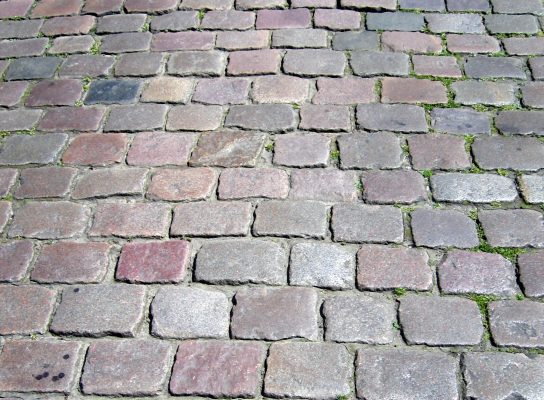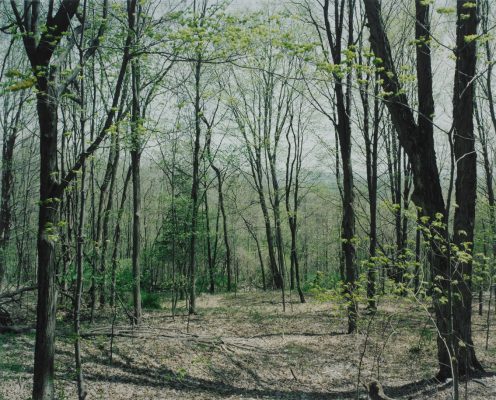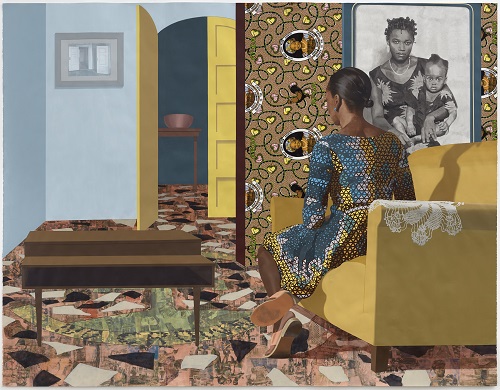The Mole says: name, and I answer. I waited for him at the indicated location and he picked me up in the Peugeot that I’m now driving. We’ve just met. He doesn’t look at me, they say he never looks anyone in the eyes. Age, he says, 42 I say, and when he says that I’m old I think that he’s definitely older. He wears little black sunglasses and this must be why they call him the Mole. He tells me to drive to the closest square, settles into his seat and relaxes. The test is easy but it’s very important to pass and for this reason I’m nervous. If I don’t do a good job, I’m not in, and if I’m not in there’s no money, there’s no other reason to join. Beating a dog to death in the port of Buenos Aires is the test to find out whether you’re willing to do something worse. They say: something worse, and look away, as if we, those on the outside, don’t know that it’s worse to kill a person, to beat a person to death.
When the avenue splits into two streets I choose the less busy one. A line of stoplights changes from red to green, one after another, and lets us advance quickly until a dark, green space emerges from between the buildings. I think that maybe there are no dogs in this square, and the Mole orders me to stop. You didn’t bring a club, he says. No, I say. But you’re not going to beat a dog to death if you don’t have anything to beat it with. I look at him but don’t answer, I know he’s going to say something, because now I know him, it’s easy to figure him out. But he enjoys the silence, he enjoys thinking that each word that he says is a point against me. Then he gulps and seems to think: he’s not going to kill anyone. And finally he says: today there’s a shovel in the trunk, you can use it. And no doubt, behind those sunglasses, his eyes twinkle with pleasure.
Several dogs are asleep around the fountain in the centre of the square. The shovel firm in my hands—the moment to strike can occur at any time—I move closer. A few of the dogs start to wake up. They yawn, take to their feet, look at one another, look at me, growl, and as I get closer they move aside. Killing someone, someone in particular, is easy. But having to choose who ought to die takes time and experience. The oldest or youngest or the most aggressive dog. I must choose. Surely the Mole is watching from the car and smiling. He must think that anyone that who is not like them is incapable of killing.
They surround me and sniff, a few move away because they don’t want to be bothered, and go back to sleep, forgetting about me. For the Mole, through the dark windows of the car, and the dark lenses of his sunglasses, I must be small and ridiculous, clutching the shovel and surrounded by dogs that are now going back to sleep. A white one with spots growls at a black dog, and when the black one snaps at the white one a third dog approaches, barks, and shows his teeth. Then the white dog bites the black dog and the black one sinks his sharp teeth into his neck and shakes him. I lift the shovel and the blow strikes the back of the white dog with spots, who falls to the ground howling. He’s still, it’s going to be easy to carry him, but when I take him by the feet he reacts and bites my arm, which immediately begins to bleed. I pick up the shovel once more and give him a blow to the head. The dog falls again and looks at me from the ground; he wheezes but is otherwise motionless.
Slowly at first and then with increasing confidence I grab him by the feet again and carry him towards the car. Between the trees a shadow moves, a drunkard approaches me and says, you can’t do that sort of thing, the dogs know who the guilty one is and will get even. They know, he says, don’t you get it?, he sits on a bench and looks at me nervously. As I reach the car, I see the Mole in his seat, waiting for me in the same position that he was in before, but I realise that the trunk of the Peugeot is open. The dog falls like a dead weight and looks at me when I close the trunk. In the car, the Mole says: if you left him on the ground, he would have got up and left. Yes, I say. No, he says, you should have opened the trunk before. Yes, I say. No, you should have done it but you didn’t, he says. Yes, I say, and I regret saying it at once, but the Mole does not reply, he looks at my hands instead. He looks at my hands, he looks at the steering wheel, and I see that everything is covered in blood, there’s blood on my pants and blood on the floor mat. You should have used gloves, he says. The bite hurts. You come to kill a dog and you don’t bring gloves. Yes, I say. No, he says. I know, I say and shut up. I prefer to say nothing about the pain. I start the engine and the car pulls smoothly away.
I try to concentrate, to discover which of all the streets that appear could lead me to the port without the Mole having to say anything. I can’t afford to make another mistake. Maybe it would be a good idea to stop at a pharmacy and buy a pair of gloves, but those kinds of gloves won’t do and at this hour the hardware shops are closed. A nylon bag won’t do any good either. I can take off my jacket, wrap it around my hand and use it as a glove. Yes, I’m going to have to get the job done that way. I think about what I said: get the job done, I like to know that I can talk like them. I take Caseros, I think it goes to the port. The Mole doesn’t look at me, doesn’t talk to me, doesn’t move, keeps looking ahead and breathing steady. I think they call him the Mole because beneath his sunglasses he has little eyes.
After a few blocks, Caseros intersects with Chacabuco. Next is Brasil, which goes out to the port. I turn the wheel abruptly and take the curve with the car leaning to the side. In the trunk, the body bumps against something and I hear noises, as if the dog was still trying to get up. The Mole, I think surprised by the strength of the animal, smiles and points to the right. Braking as I turn on to Brasil, the wheels screech and with the car tipping over again there’s a noise in the trunk, the dog trying to pick himself up from between the shovel and other stuff in the back. The Mole says: brake. I brake. He says: accelerate. He smiles, I accelerate. Faster, he says, go faster. Then he says brake and I brake. Now that the dog has got knocked around, the Mole relaxes and says: drive on, and doesn’t say anything else. I drive on. The street that I’m on doesn’t have traffic lights or white lines, and the buildings are getting older and older. Any minute now we’ll be at the port.
The Mole points to the right. He tells me to go for three more blocks and take a left, towards the river. I obey. We’re already at the port, and I stop the car in a parking lot filled with rows of containers. I look at the Mole but he doesn’t look at me. Without wasting time, I get out of the car and open the trunk. I didn’t put my coat around my arm but I don’t need gloves any more, it’s all done, I need to finish quickly so we can get out of here. I can only make out some yellow lights in the distance from the empty port, lights that illuminate a couple of boats weakly. Maybe the dog is already dead, that would be best, I think, I should have hit him harder the first time; but he’s definitely dead now. Less work, less time in the Mole’s company. I would have killed him right away, but this is how the Mole does business. They’re whims, bringing a half-dead dog to the port doesn’t make anyone braver. Killing him in front of all those other dogs would have been much harder.
When I touch him, when I grab him by the feet to lift him out of the car, he opens his eyes and looks at me. I let him go and he falls back into the trunk. With his front paw he scratches the bloodstained mat, he tries to get up and his back legs tremble. He’s still breathing but pants heavily. The Mole must be counting the minutes. I pick the dog up again and something must hurt him because he moans, though he’s no longer moving. I set him on the ground and drag him away from the car. When I go back to the trunk to look for the shovel the Mole gets out. Now he’s beside the dog, looking at him. I approach with the shovel, I see the Mole’s back and behind him, on the ground, the dog. If no one learns that I killed a dog, nothing will be found out. The Mole doesn’t turn around to say anything to me. I raise the shovel. Now, I think. But I don’t bring it down. Now, says the Mole. I don’t bring it down on either the back of the Mole or on the dog. Now, he says, and then the shovel slices the air and strikes the head of the dog, who, on the ground, howls, quivers for a moment, and then everything’s quiet.
I start the engine. Now the Mole will tell me who I’ll work for, what my name will be, and how much cash is involved, which is the most important part. Take Huerga and then turn on Carlos Calvo, he says.
I’ve been driving for a while. The Mole says: at the next street pull over to the right. I obey and for the first time the Mole looks at me. Get out, he says. I get out and he moves to the driver’s seat. I stick my head through the window and ask what’s going to happen now. Nothing, he says. You hesitated. He starts the engine and the Peugeot pulls away in silence. When I look around I realise that he’s left me in the square. In the same square. From the centre, near the fountain, a bunch of dogs start to get up, little by little, and look at me.
This piece was selected for inclusion in the January 2014 Translation Issue by Daniel Medin, a contributing editor of The White Review. He helps direct the Center for Writers and Translators at the American University of Paris, and is Associate Series Editor of The Cahiers Series.
ABOUT THE CONTRIBUTOR
Samanta Schweblin
was born in Buenos Aires in 1978. In 2001, she was awarded first prize by both the National Fund for the Arts and the Haroldo Conti National Competition for her debut, El Núcleo del Disturbio (where 'To Kill a Dog' appears). In 2008, she won the Casa de las Américas prize for her second collection of stories, Pájaros en la boca. Two years later, she was listed among the Best of Young Spanish Writers by Granta Magazine. Her work has been translated into numerous languages and appeared in more than twenty countries. She lives in Berlin.Brendan Lanctot is Assistant Professor of Hispanic Studies at University of Puget Sound. He is the author of Beyond Civilization and Barbarism: Culture and Politics in Post-Revolutionary Argentina and articles on contemporary Argentine film and literature.




